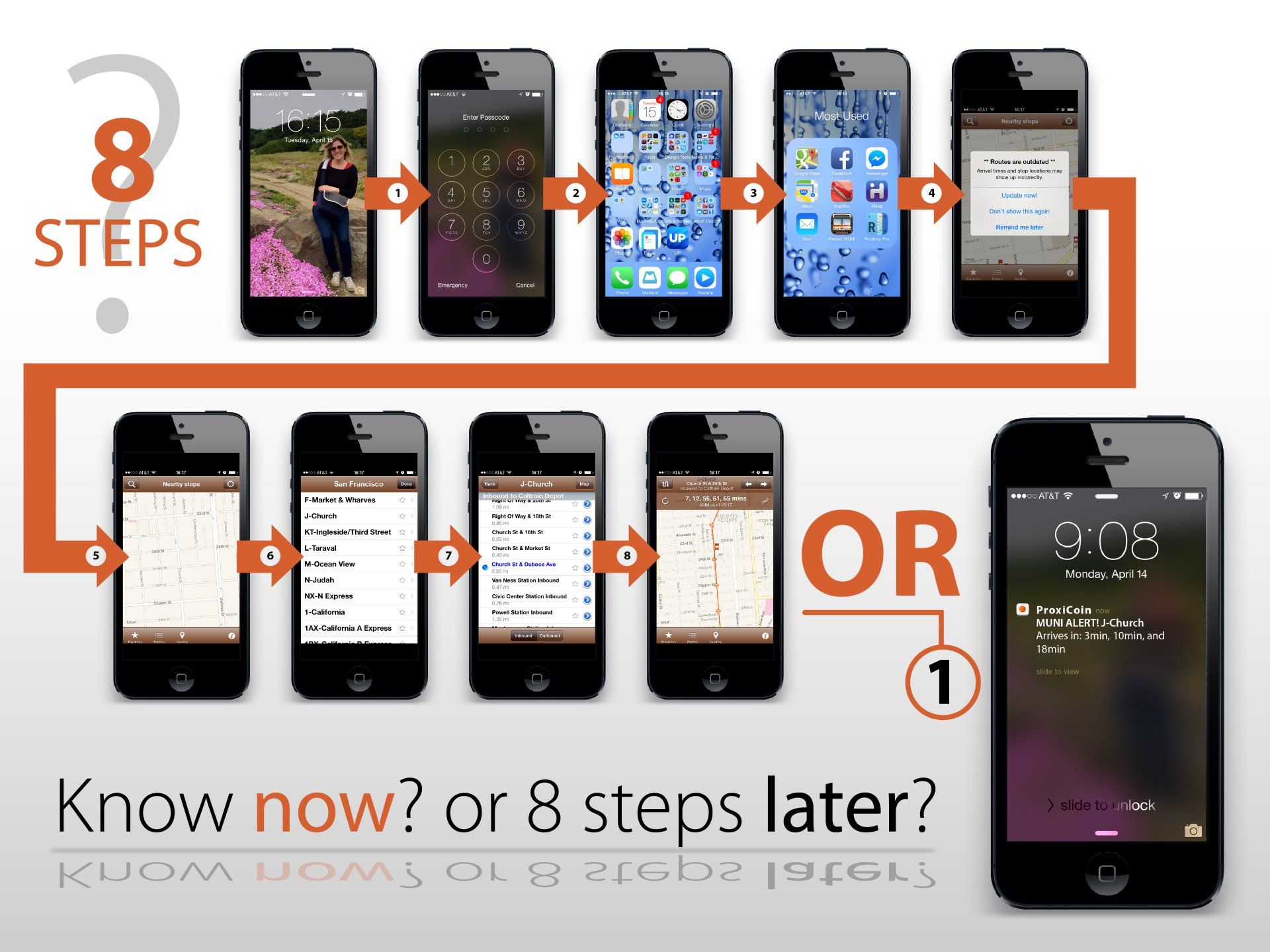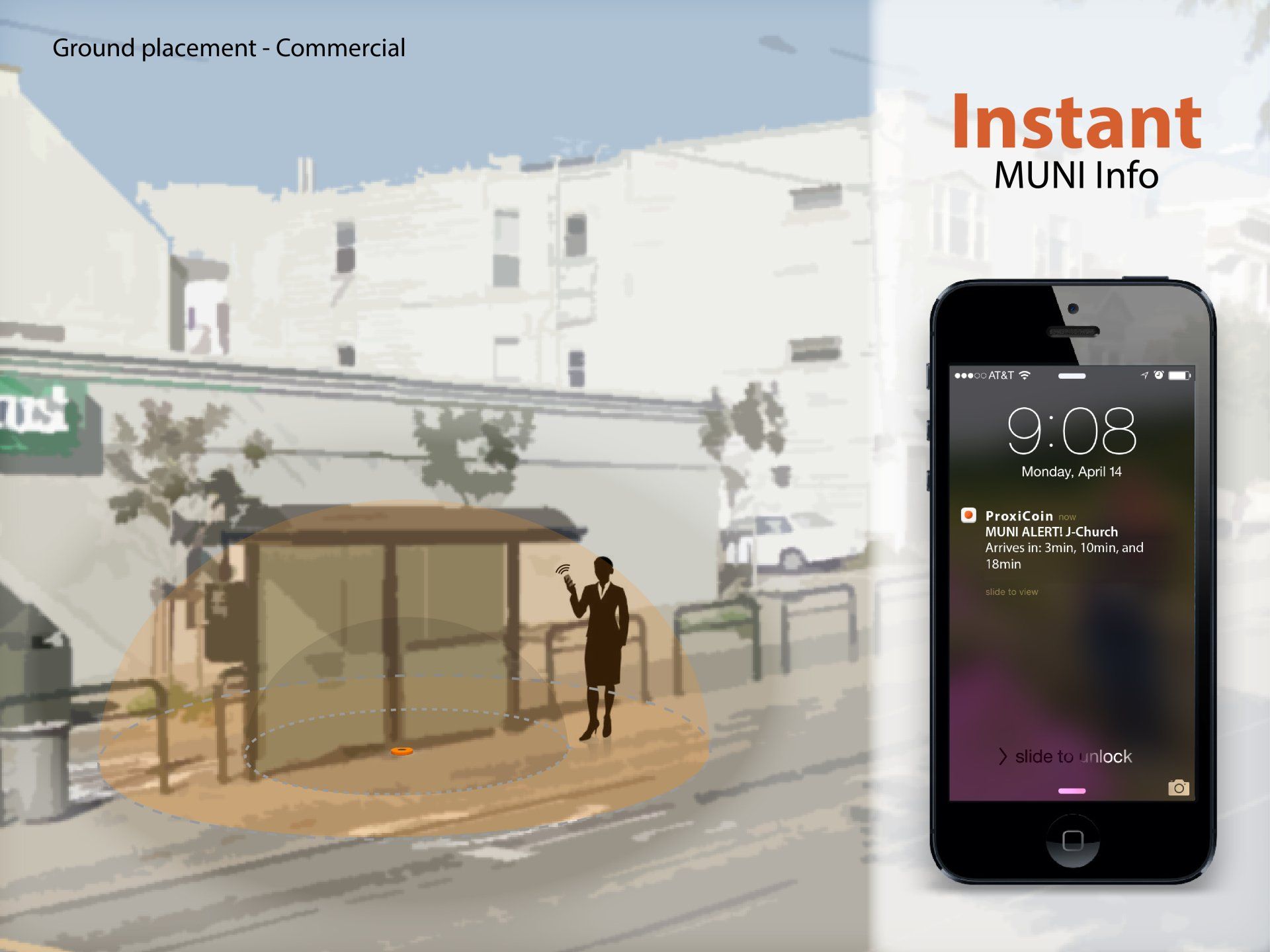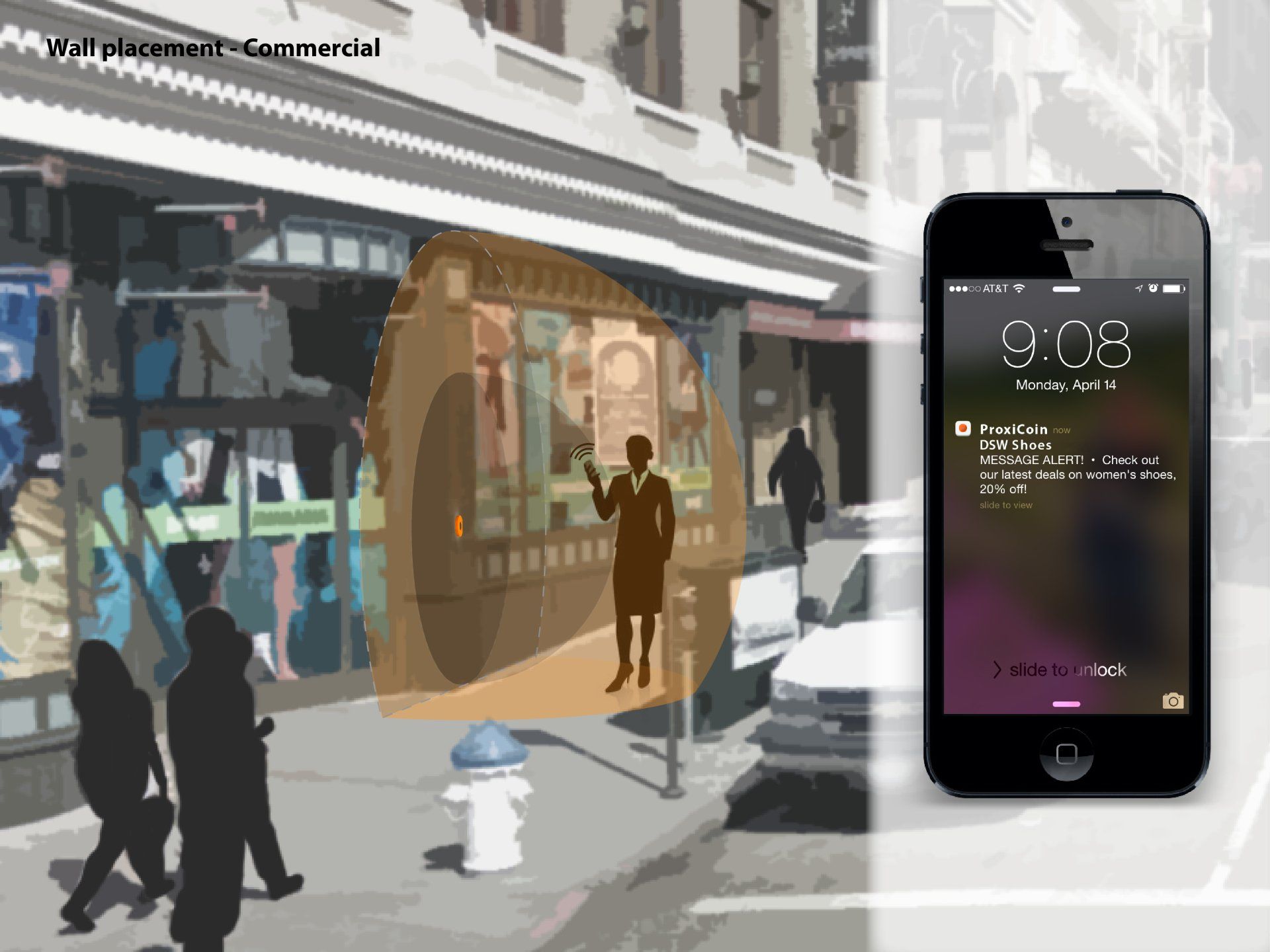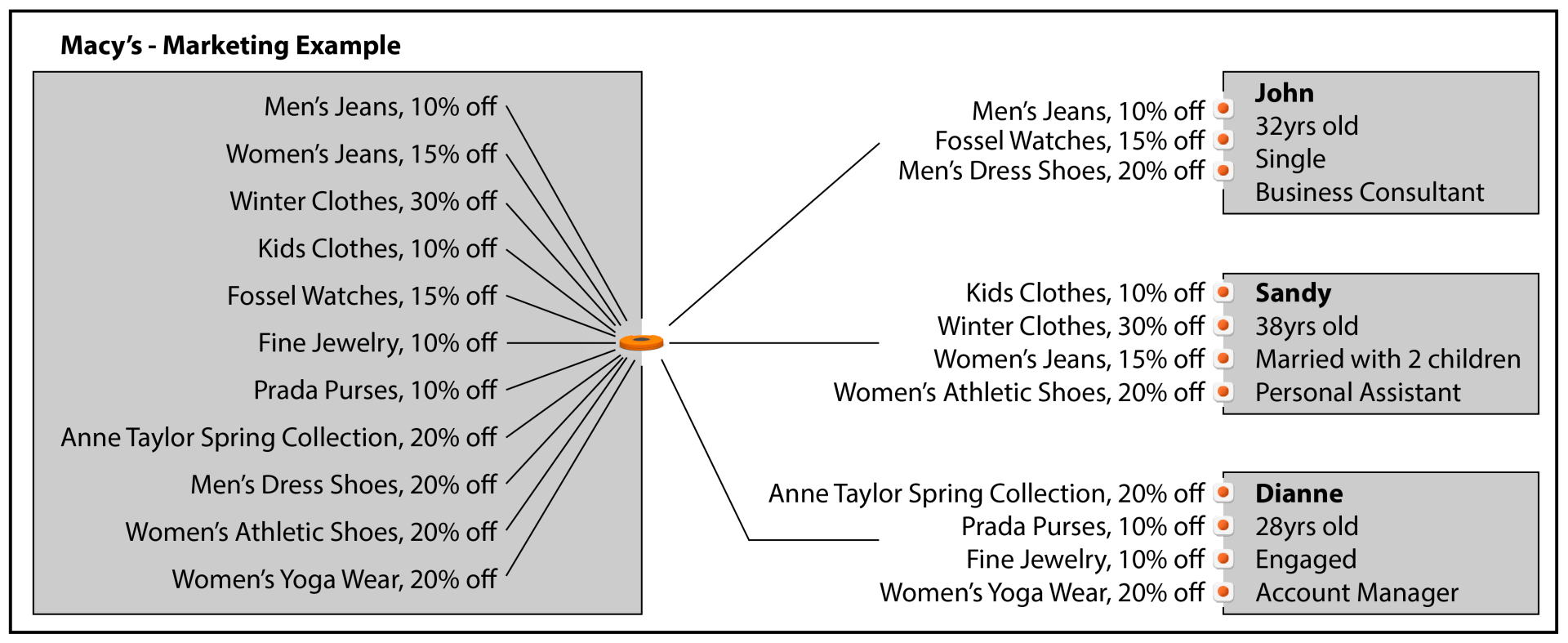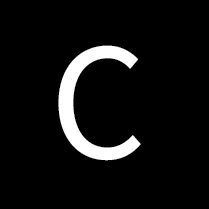Apple's Missed Opportunity
In Spring 2014 I had an idea to utilize the Bluetooth in an iPhone as a way to send users relevant data about businesses & services that they were physically near (I called it ProxiCoin). Little did I know, in Summer 2013 Apple had announced this same idea in the form of iBeacon. As a tool, the product had a lot of potential however it received little attention from a consumer side and some on the business side. So, what happened to the iBeacon? #Apple #usercentereddesign #reboot
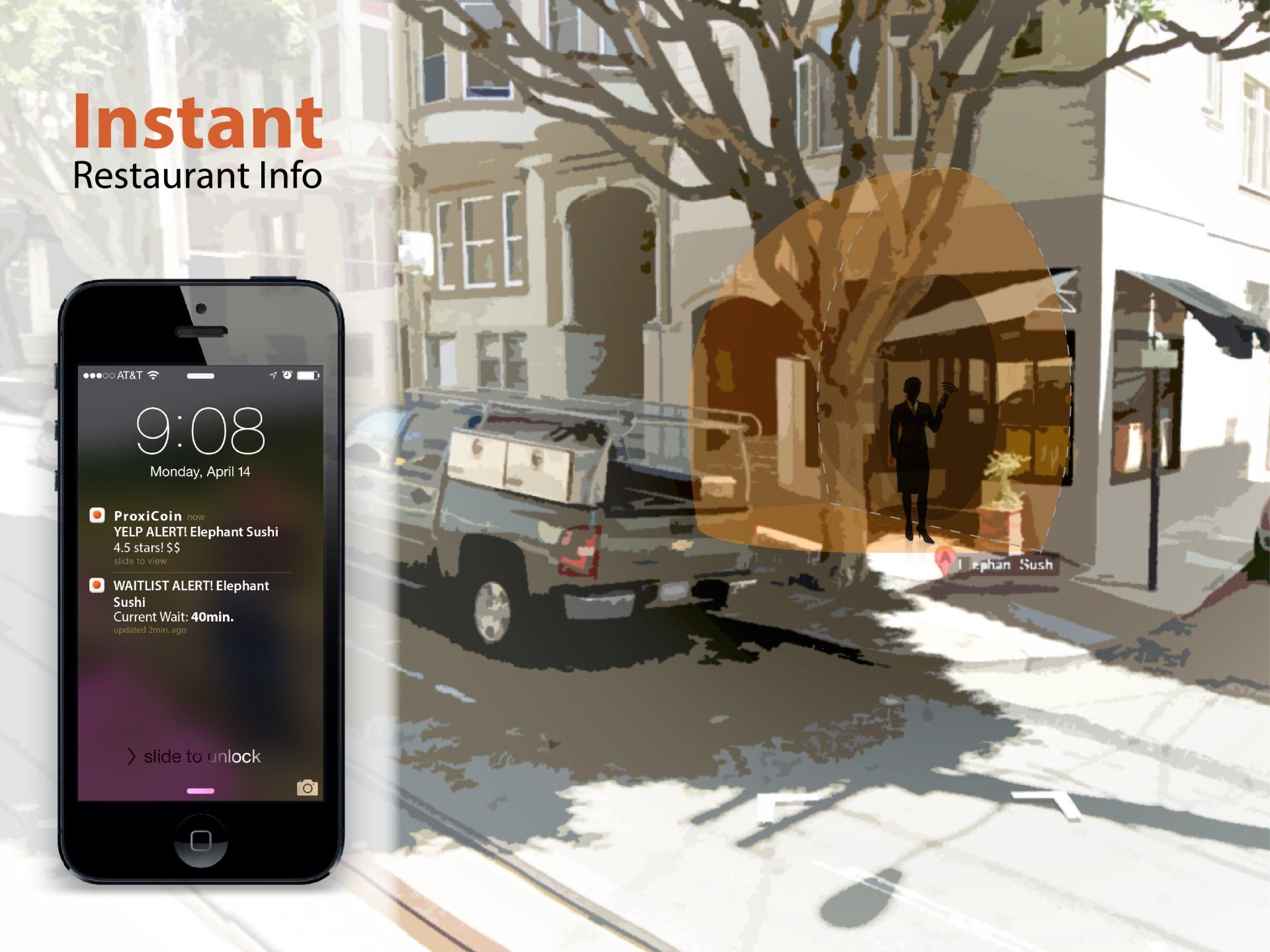
Restaurant scenario: A young couple is walking through the city in the early evening. They discuss dinner and decide to walk around and see what interests them. One of them simply selects the “dinner” slider switch on their phone and puts it away. At that point, a punchcard of data populated from previous Yelp searches and reviews they’ve written is created. As they continue to stroll the city they pass Elephant Sushi which matches up with the punchcard. The user is then notified with two points of interest: the restaurant rating & current wait time. Should they decide to pick the restaurant, all they would need to do is swipe the wait time notification to automatically add their name to the list. (No data was shared until they added their name to the waitlist).
Public transportation scenario: A user is headed to work. They have already selected their preferred routes in their app. As they approach the transit stop they are promptly informed of the current wait time, any delays on their route, and alternate route information.
DSW scenario: A user is walking through the city. They have previously been browsing for women’s shoes on their phone. Based on their shopping habit a temporary punchcard is created. As they walk by DSW shoe store they are notified about a current sale on women’s shoes. As a special bonus, it informs the user that if they shop now they will receive an additional discount by swiping the notification to reveal a temporary QR code to use at purchase.
By using a punchcard strategy, it allows for passive filtering and avoiding unnecessary notifications. On the business side, the data they are broadcasting is somewhat like a weekly flyer. A blast of all related data in a burst format. The data that matches the points on the punchcard gets pushed and the rest is deflected.
Macy’s illustration: The image shows how the business would input the current data points for their sale and broadcast it out via iBeacon. Three users are shown and what their punchcard data might be like. As each user passes by Macy’s they receive a notification with only the relevant points-of-interest and a call to action should they decide to shop.
Apple may have missed the opportunity in 2013, but it is my option that it still has an opportunity to become successful with the right approach.
* The images included are from the concept I had arrived at in 2014.
UX Design, Industrial Design, and Food




